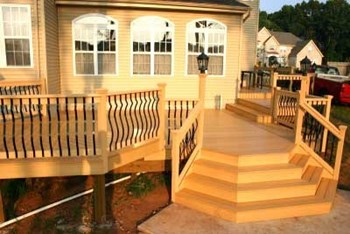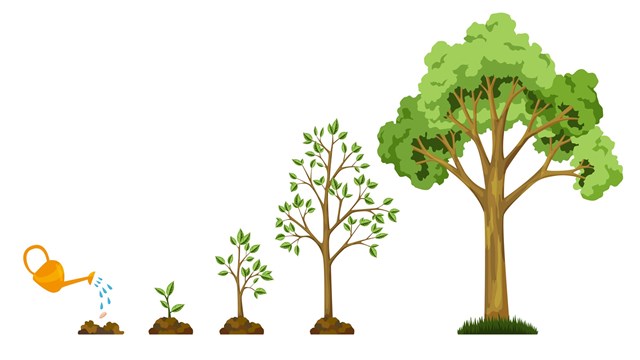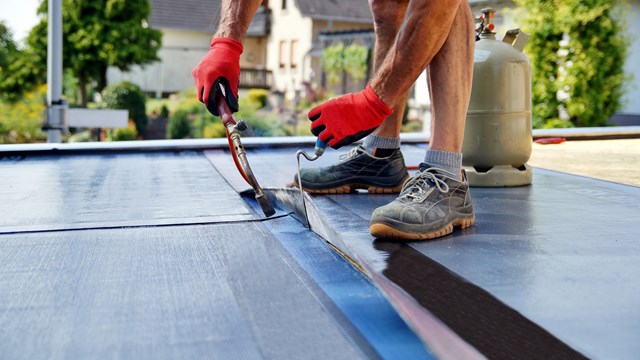
If you have lived through a New Jersey winter, you know that some mighty bad weather can hit the area—and it's not just people who suffer from it. When strong wind, heavy snow, rain, salt water and freezing temperatures arrive, they can cause properties to look a bit, well, under the weather. Years of wear and tear from such elements will affect just about every exterior aspect of a condo and co-op, but the three most common outdoor maintenance issues concern fencing, decking and siding.
On the Fence
If properly designed and maintained, fencing can add tremendous value to a co-op or condominium. Not only do fences augment the security and privacy of a property, they are also aesthetically pleasing.
Because of rapid improvement in fencing products in the past decade, homeowners associations would be wise to look at all the options out there and choose a fence that will work best for them.
There are four kinds of fencing generally used for residential properties: chain-link, wood, PVC and ornamental. Chain-link is cheaper than wood, which is cheaper than PVC. Ornamental fences, the priciest of all, are usually made of expensive metals like wrought iron.
"There's wood, chain link and ornamental, which is iron or substitutes in steel or aluminum," says Chris Raywood of Jan Fence Inc. in Wayne. "In high-ticket condo areas you find the ornamental fences more."
Chain-link is the way to go when the primary purpose is security. Placed around the entire perimeter of a property—sometimes with barbed wire at the top, depending on the neighborhood - they do the job, but are not exactly the most attractive.
Inexpensive, attractive, and reliable, wood has traditionally been the fence of choice—but this is changing.
"You still see wood," Raywood says, "but more people are choosing the PVC these days."
Robert Garcia, owner of Rutgers Fence & Construction Co., Inc. in Dayton, agrees. "In the condo environment, people use wood and PVC, but when it's time to replace fencing, really only the PVC is being looked at," he says.
PVC, short for polyvinyl chloride, is a hard plastic used in everything from vinyl siding to the magnetic stripes on credit cards. Impervious to water damage and mold, PVC lasts far longer than wood—so long, in fact, that PVC fencing generally comes with a lifetime guarantee. Because PVC is white, it doesn't need to be painted, just power-washed every few years, and it doesn't splinter. In the past, the relatively steep price of the material made PVC fencing prohibitively expensive, but the professionals say that's not really the case anymore.
"Now the price of a PVC fence is only about 25 percent higher than the wooden ones," Garcia says, "which is much better than what it was only about two years ago."
The initial investment pays off, as PVC requires minimal maintenance and lasts much longer.
"Wood fences age and with the weather, you're lucky if you get 12 or 15 years out of it, if you maintain it," Garcia says. "There's nothing good about wood."
Throughout the state, as wooden fences deteriorate, they are being systematically replaced with the more cost-efficient PVC.
"PVC has completely taken over New Jersey," says Michael Labarbera, of Frontier Fence Co. in Central New Jersey. "The largest-growing segment in the fencing community is vinyl fencing, and in ornamental aluminum, where they do their pools. Most condos are switching."
Replacing a wooden fence with six-foot PVC would run about $40 to $50 per foot, including labor.
"It's probably about $10 to $20 less a foot for the chain link and maybe $5 to $10 less for wood," says Labarbera. "If you think about it, for the most part it's a small quantity of fence for each individual homeowner."
Side of the Times
Generally, the siding on a building comes in two varieties: wood and vinyl. Each exhibits its own telltale signs of deterioration, although, as in fencing, wood wears out faster.
One of the most obvious signs of damage is dry rot, which is basically a wood cancer. The term dry rot is a misnomer; ironically, dry rot occurs when it is wet. Spores that thrive in damp, cool, overcast conditions marking winter in the Northeast, grow and multiply, eating away at wood fibers and destroying the structural integrity of building materials.
"You can see the distress in the wood siding," says Dean Carman, owner of Times Siding in Branchburg. "A lot of it has to do with the signs of age of the wood—the rotting, the peeling of the paint, not taking stain anymore, the cupping of the wood."
Dry rot is only the most obvious destroyer of one, but hardly the only one. Wood siding deteriorates due to a combination of age and weather. More still, old, rotted wood siding, has an adverse impact on property values.
"The ultraviolet rays beat the heck out of the wood and suck everything out of it so it splits, and the wood no longer is a protective layer for the exterior of the building," Garcia says.
As with fencing, many associations are replacing old wood siding with vinyl. In the long run, its durability and lower level of maintenance are worth the difference in price.
"Vinyl has made such tremendous strides over the last few years as far as the chemical makeup and quality," Garcia says, "and offers so much better protection. To move into a new vinyl panel is a tremendous cosmetic advantage, and the life span is essentially a lifetime."
That said, vinyl siding is not impervious. After 20 years or so, wear-and-tear can begin to show. There might be signs of chalking and fading and a general worn-out look, especially if there are variations in color among the panels.
"The warranty for condos is a little different than for homeowners," Garcia says. "When negotiating with condos, we can get them 30 to 40 years with the manufacturer, which covers any problem with the siding panel itself."
Since the design of condos differs tremendously from one to the other, the price of a siding project will fluctuate as well. Garcia suggests a ballpark figure of between $3.50 and $5 per-square-foot, including all the bells and whistles.
On Deck
Co-ops and condos often have decks on their property, and these also deteriorate over time. Decks are usually made of wood or concrete. Both have their pros and cons.
"For a patio or ground-level deck, you are going to want to use concrete, because you can lay it on the ground," says Leonard Liberto, owner of Rusling Concrete in Trenton. "For something more elevated, you would want to use wood."
Concrete breaks down over time, freezing and thawing as the seasons change. "Concrete cracks, and if you allow the crack to absorb water and freeze and thaw, freeze and thaw, that's asking for trouble," Liberto says. "You need to cork the crack and fill it. Concrete life can be more than 20 years if you take care of it this way, but certainly you can never control the weather, and that can shorten it."
With wooden decks, the lifespan is much shorter. The combination of weather and usage can wreak havoc on wooden steps and boards. Over time, they will wear out or rot. Wooden decks should be inspected every year and any damaged boards should be replaced.
You don't necessarily need to hire someone to do the inspections; just examine the surface boards yourself for excessive curling, cracking, rotting or other signs of stress.
The cost of installing a concrete or wood deck depends on the square footage. "Since most associations have patios that are eight-by-eight or ten-by- ten, the average price for a concrete deck is around $10 a square foot," Liberto says. "Wood would be more."
Final Thoughts
The state of New Jersey requires that contractors be licensed. As per the Contractor Registration Act—intended to protect consumers contracting for home improvement work—all building contractors must register with the state's Division of Consumer Affairs.
Do your homework. There are many reliable siding, deck and fencing companies. If you are switching to one you haven't used before, make sure they have experience working for a condo or co-op, and be sure to get references.
Keith Loria is a freelance writer and a frequent contributor to The New Jersey Cooperator.






Leave a Comment